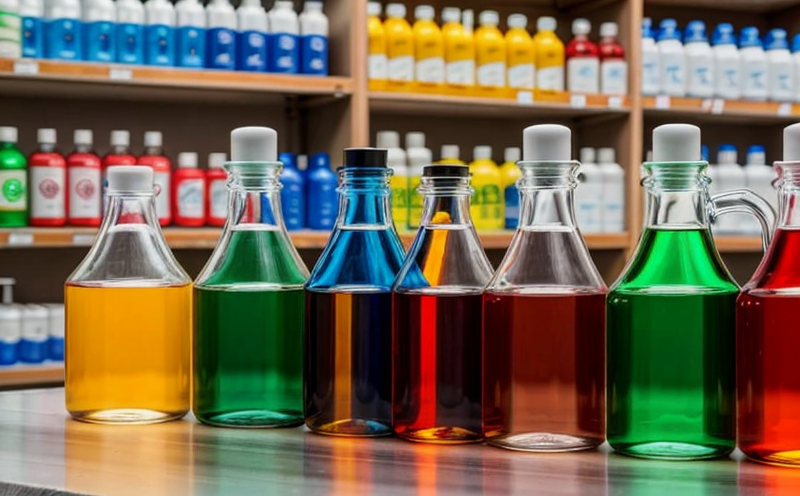Monitoring of alkylphenols and surfactants in fabrics
The monitoring of alkylphenols (APs) and surfactants in fabric products is crucial for ensuring product safety, compliance with international regulations, and maintaining a reputation for quality. These compounds are often used as solvents or dispersants during the manufacturing process but may persist in fabrics, posing potential risks to both consumers and the environment.
Arsenic, benzene, and other toxic substances can be inadvertently introduced into fabric through the use of certain chemical agents. Alkylphenols are a class of surfactants that include nonylphenol (NP) and nonylphenol ethoxylate (NPE), which have been identified as endocrine-disrupting chemicals (EDCs). Their breakdown products can lead to adverse health effects in humans.
In recent years, the textile industry has seen a shift towards more sustainable practices. This includes the development of low-impact dyes and finishes that do not contain hazardous substances. The monitoring of alkylphenols and surfactants is essential for companies committed to sustainability, as it helps them adhere to strict regulations like REACH (Registration, Evaluation, Authorisation and Restriction of Chemicals) in Europe.
The testing process involves the extraction of these compounds from fabric samples using a solvent-based method. The extracted solutions are then analyzed using highly sensitive analytical techniques such as High-Performance Liquid Chromatography with Ultraviolet Detection (HPLC/UV) or Gas Chromatography-Mass Spectrometry (GC/MS). These methods allow for precise quantification of the target compounds down to parts per billion levels.
The primary goal is not only to detect the presence but also to quantify these substances, ensuring that the final products meet stringent safety standards. This service ensures compliance with international standards such as ISO 8153 and ASTM D7365. The service is designed to cater to quality managers, compliance officers, R&D engineers, and procurement teams within the textile industry.
The process begins with careful specimen preparation. Fabric samples are cut into small pieces that represent a cross-section of the product being tested. These samples undergo extraction in an organic solvent bath at elevated temperatures for several hours. The extracted solution is then filtered to remove any particulate matter and prepared for analysis.
During analysis, the extracted solutions are injected into either HPLC or GC/MS instruments. For HPLC, a reversed-phase column is used to separate the alkylphenols based on their polarity. In contrast, GC/MS uses thermal desorption followed by mass spectrometry to identify and quantify the surfactants present.
The results are reported in terms of concentration levels (µg/g or ppm), which allow for a detailed understanding of the chemical composition of the fabric. This information is invaluable for manufacturers who wish to optimize their production processes, reduce environmental impact, and ensure product safety.
Scope and Methodology
| Target Compounds | Analysis Technique | Sample Preparation | Report Metrics |
|---|---|---|---|
| Nonylphenol (NP) | HPLC/UV or GC/MS | Cutting into small pieces, extraction in organic solvent bath at elevated temperatures for several hours. | Concentration levels in µg/g or ppm |
| Nonylphenol Ethoxylate (NPE) | HPLC/UV or GC/MS | Cutting into small pieces, extraction in organic solvent bath at elevated temperatures for several hours. | Concentration levels in µg/g or ppm |
| Biphenyls (BP) | HPLC/UV or GC/MS | Cutting into small pieces, extraction in organic solvent bath at elevated temperatures for several hours. | Concentration levels in µg/g or ppm |
The methodology employed ensures accurate and reliable results, adhering to international standards. The use of HPLC/UV and GC/MS guarantees that even trace amounts of alkylphenols and surfactants can be detected and quantified.
Benefits
The benefits of monitoring alkylphenols and surfactants in fabrics extend beyond mere compliance with regulations. By identifying these compounds early in the production process, manufacturers can make informed decisions to eliminate or reduce their use. This proactive approach not only enhances product safety but also contributes to a more sustainable supply chain.
- Enhanced Product Safety: Ensures that finished products do not contain harmful substances, thereby protecting consumers from potential health risks.
- Regulatory Compliance: Helps textile companies comply with international standards and regulations such as REACH, Oeko-Tex Standard 100, and others.
- Sustainability: Promotes the use of eco-friendly chemicals and processes, reducing environmental impact throughout the lifecycle of a product.
- Brand Reputation: Demonstrates commitment to quality and safety, enhancing brand image in the competitive market.
The service is tailored to meet the specific needs of various stakeholders within the textile industry. For R&D engineers, this data can be used to innovate safer processes. Quality managers will find it invaluable for ensuring consistent product quality. Compliance officers will benefit from having accurate and reliable data for regulatory reporting. Procurement teams can use these insights to select suppliers who adhere to strict chemical control protocols.
Competitive Advantage and Market Impact
- Pioneering Sustainability: Companies that adopt this service early can position themselves as leaders in sustainable practices, attracting eco-conscious consumers.
- Proactive Risk Management: By proactively identifying and addressing potential issues, firms reduce the risk of product recalls or legal challenges.
- Innovation Opportunities: Insights gained from monitoring alkylphenols and surfactants can drive innovation in fabric formulations and processing techniques.
The service is particularly advantageous for companies looking to differentiate themselves in a crowded market. It provides a competitive edge by ensuring that products meet the highest safety standards, thereby fostering trust with customers and stakeholders.





